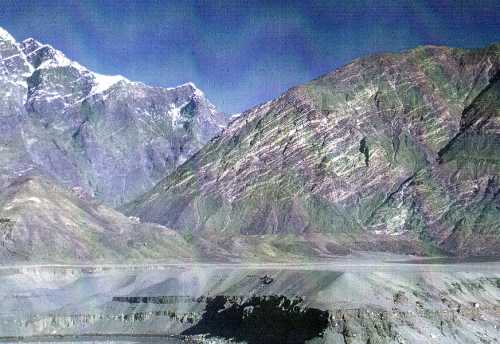
The upper part of the Kohistan arc terrane contains a swarm of granite sheets, well exposed on the confluence between the Gilgit and Indus rivers.
 |
| Looking east across the confluence of the Indus and Gilgit rivers. Part of the Confluence granites swarm is evident on the 600m cliff opposite. |
The oldest set of these sheets are called the Confluence Granites (50-30 Ma). The younger set are considered to form the distinct Parri sheets (c. 26 Ma). These two sets are separated on the type of mica they contain. Both swarms have high Sr and Ba abundances with 87-86 Sr isotopic ratios of 0.7045-0.7054. These, together with Nd isotopic data, suggest that the granites had a juvenile arc source without any significant contribution from old continental crust. Consequently these data suggest that significant underthrusting of northern Kohistan by the Indian continental crust did not occur until after 26 Ma.
| Confluence area | Nanga Parbat contents |